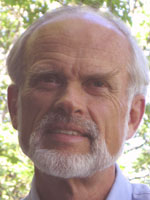Preston Smith: Rapid and Flexible Product Development Expertise

|
Preston G. Smith received a Ph.D. in engineering from Stanford University and served for the next twenty years in engineering and management positions in the aerospace, automotive, highway safety, defense, and diversified industries. In 1984 he initiated a corporate program to accelerate product development, and for the next 27 years, he served as a Certified Management ConsultantTM specializing in advanced product development techniques. Consulting and training engagements for products as diverse as supercomputers and footwear have taken him to hundreds of venues in 31 countries. Initially, Preston focused his consulting on time to market, because a common issue in all units of his employer, a manufacturer of diverse products, was slow product development. This resulted in his first book, Developing Products in Half the Time (with Donald Reinertsen; originally published in 1991). Preston's interest in development flexibility has been brewing for years. Developing Products in Half the Time covered the core of flexibility—iterative and incremental development—in its fourth chapter. Another part of flexibility, responsive experimentation (Chapter Four of Flexible Product Development) includes rapid prototyping, which Preston started following in 1988. More important, super-rapid prototyping machines, often called 3-D printers, appeared in 1996. Although some people denigrated 3-D printers as a "poor man's rapid prototyping system," he saw the very low costs and rapid responsiveness of such systems as opportunities to change the way organizations develop new products radically by harnessing this quick, inexpensive feedback. He followed these developments closely, having keynoted at a rapid prototyping conference in Australia in 1995 and participated in six others in Australia, the United Kingdom, South Africa, and the United States since then. Over the next decade or two, Preston has helped product architecture (Chapter Three of Flexible Product Development and the sixth chapter of Developing Products in Half the Time) to move from a solely technical matter to a business strategy topic, although its role in enhancing flexibility during development is still not widely appreciated. The tipping point for him was in 2004, when the Agile Development Conference (ADC) invited him to keynote. Agile development aims precisely at flexibility, except that it only pertains to software development. Having started his career in the 1960s immersed in programming, he had been observing software development for years. It impressed him that software development projects have experienced more than their share of spectacular failures, but this community has studied these failures, done impressive research on methodologies, and improved—to a greater extent than product development in other fields, he believes. Notwithstanding that software developers have a lead in understanding their methodologies, the 2004 ADC invited Preston to speak—characteristically—to see what they could learn from an allied field. They rather confused who was the teacher and who was the student. As a result, he attended other agile conferences since then, joined the Agile Alliance, and was a founding member of the Agile Project Leadership Network—and he took many notes. As a result, what the agilists have achieved in software development inspired him to write Flexible Product Development, which provides comparable means for developing non-software products flexibly. Preston retired in 2013 but maintains this site as a resource for his many former clients around the globe. |
|
|
|
|
Home Flexible Product Development (book)
Proactive
Risk Management Developing Products in Half the Time (book)
Product Development Publications
+1 (503) 274-0673 Last updated: 26 May 2021. Please report any problems you encounter or questions that arise |